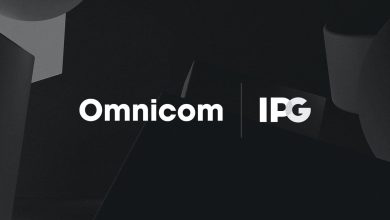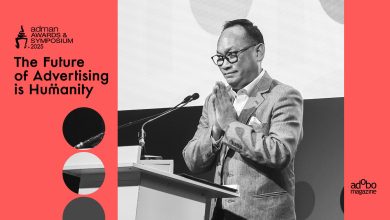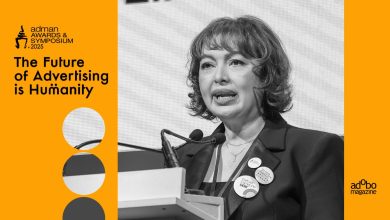Earlier this year, two representatives of then-named J. Walter Thompson Manila (now Wunderman Thompson Philippines) won at an internal competition within the agency, which meant they will be flying over to Southern France for the Cannes Lions International Festival of Creativity for the Young Lions competition.
The duo were Zachary Lim, a senior copywriter at Wunderman Thompson Philippines, and Lance Francisco who now works for Ogilvy Shanghai. Their winning entry for their internal deliberations was a campaign for Grab.

During the competition proper over at Cannes, the two were faced with a challenge on creating a campaign for the World Wildlife Fund, which they would eventually win a bronze award for. Zach Lim, whose team recently won gold for New Stars at Ad Stars 2019, gives us an up close and personal look at how the Digital Young Lions competition unfolded:
IN THE WORKS: Buy Back Our Future (2019 Digital Young Lions Bronze)
This is a series of in-depth deconstruction of the process of the work; a deep drill-down into the creative process in hopes of providing any sort of insight beyond closed doors. This first article chronicles Lance Francisco and Zach Lim’s process as they compete in the Cannes Young Lions Digital category.
The Brief: Create a digital campaign or innovation for WWF to promote their monthly donation model to millennials.
The Idea: “Buy Back Our Future” – a joint subscription model that lets you pay for future technology like a hoverboard using extended terms while the other half of the proceeds go to WWF to ensure that our world actually makes it to the future.
5PM – COMPETITION BRIEFING
We remember the environment feeling very tense. One guy even thought Lance was trying to peek at his notes when he was actually just adjusting his seat.
The briefing was incredibly concise. They showed us material from before; Very emotional stuff. But as they went on to describe the brief further, it felt like their biggest challenge was straying away from their own brand and offering something different to millennials.
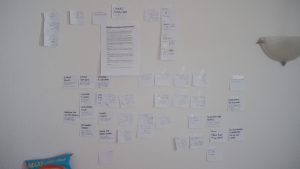
Lance and I talked about how we felt about the brief. We agreed that the brand obviously wanted something new. We also felt that the brand was kind of boxing millennials into their stereotypical behavior – that they didn’t care enough or that they were overall apathetic. It felt negative and unfair to millennials, so we both agreed that we would need to find a different angle.
A useful piece of advice we used at this point was from our creative director, Javey Villones. He told us to “determine the win condition”. Define to yourself and your partner what kind of idea would win the competition. We decided that the idea had to bring a new view of millennials into light, and at the same time, we wanted to stray away from using fear or guilt and instead try and positivize the campaign.
6 to 8PM – GOING OUR SEPARATE WAYS
After stocking up on groceries and notepads, we went our separate ways. We actively tried to avoid each other, even ignoring each other as we accidentally passed one another on the streets.
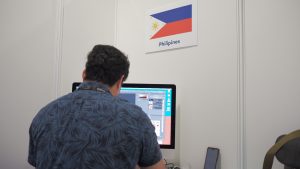
I tried to come up with new ideas but for some reason, I kept going back to a note I scribbled down during the briefing. It was while they were explaining the mechanics of the payment method. Someone from client side mentioned the word “subscription”. Subscription reminded me of payment plans so I wrote down “Add a little more money as a down payment for future tech.”
It wasn’t much at the time but I liked how this would probably the only idea that would ask you to pay more than the usual. I created a skeletal form of the idea, a joint donation and down payment plan in partnership with start-ups. Then I tried to leave the idea lone and let it breathe.
The thing is, after thinking of other ideas, I kept going back to that idea almost every 30 minutes and add something new. I added a subhead, the rationale, and even the title “Buy Back the Future”. In the end I had a whole set of half-baked ideas and one fully developed idea. That annoyed the hell out of me.
Lance, on the other hand, kept thinking and asking himself: “Would this make me want to donate?” He turned himself into his own litmus test since he considers himself a stingy person. So he thought that was a good challenge. Like, if the idea could make him donate, then that really is a damn good idea. He tried thinking of stuff that made sense and some wtf ideas that didn’t make any sense, just laying out every option. And it was really hard cause I couldn’t think of a way to make me donate on a long term basis. The recurring question at its core was “Why would I donate monthly?”
8PM – THE REGROUP
We presented our ideas to each other, stuck them on a wall in no particular order, and started to talk. We had this rule where we can’t shoot down ideas at this stage. Only build. We also have this thing where we pick our favorite ideas from each other and then explain why it works. I was personally hoping that Lance wouldn’t choose the “Buy Back the Future” idea right away because it felt that there was no way I got the “correct” idea so fast. But yeah. That was literally the first idea he chose from my pile.
When we were deciding which ideas would make the cut, we went back to what Leigh Reyes told us at a mentorship dinner the night before: “Find the story.”
What idea treated our demographic like active characters in a story, with an interesting tension, and a complete resolution. That became our standard. It had to be more than a repurpose of a UI element like our last idea for Grab Food.
12 AM – THE CRASH
We both agreed that “Buy Back Our Future” was the idea that was definitely unique but I admitted to Lance that was one of my first thoughts so I couldn’t trust it right away. The rest of the night was spent trying to top that idea. We tried to form new ideas but we didn’t realize how tired we actually were. Even after a can of Redbull each, we were still struggling to make sense of the other ideas.
An important decision we made here was recognizing we were tired. There was no point in forcing it. If we kept going we knew we would be wasting our time thinking on half a brain each. So we decided to sleep it off, wake up early, and try again.
The next morning we woke up and went our separate ways again. We met up at around lunch time and discussed our ideas over microwaved bowls of pasta at a quiet park. When we went back to our wall of ideas, after merging, editing, and twisting some ideas around, we realized that it really was indeed “Buy Back Our Future” that we would work on, but at least we did our due diligence and we would never wonder “What if?”
1PM the next day – EXECUTION
We knew at the beginning of the briefing that we could do the whole concept board in about 3 hours, so by this time we weren’t feeling nervous about whether or not we would make the deadline. So before we went off to the Palais to execute we decided on timelines and the foundation of the concept board. I wrote up the copy and Lance went through a few layout options.
One major decision we committed to was which product to feature. At first, the concept board was meant to feature a jetpack: the classic image of something fun in the future. But Lance pointed out that it’s ironic that something that would consume so much fuel and energy would be used for a campaign for WWF.
The major change in the concept board that we feel really made a difference was removing the device from the center of the board. We realized that this was a digital competition anyways so any mention of it being digital is pretty much assumed. We chose to focus on the idea of Buy Back the Future by keeping the hover board with the price tag and payment terms on it.
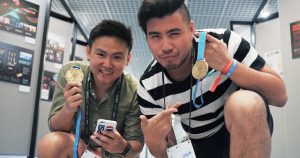
In around 3 hours, we were wrapping up the concept board: looking for typos, fixing kerning, checking for any small detail that could make a difference. We cut it a bit close; around 15 minutes before the deadline. But nothing too bad.
And that was the end of the process. Nothing to do but enjoy some talks and freebies from the Facebook tent and hope for the best.



